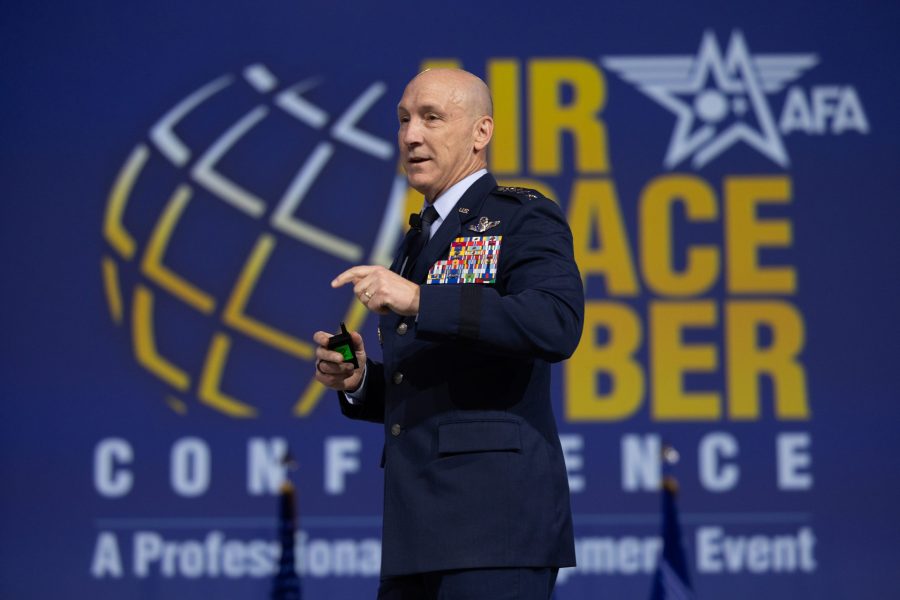NATIONAL HARBOR, Md.—The first F-47 Next-Generation Air Dominance fighter will be ready to fly by 2028 and the first airframe is already being built, Air Force Chief of Staff Gen. David W. Allvin announced during a keynote address Sept. 22 at AFA’s Air, Space & Cyber Conference.
“It’s the platform that, along with all of the rest of the systems, is going to ensure dominance into the future. We’ve got to go fast,” Allvin said. “I’ve got to tell you, team, it’s almost 2026. The team is committed to getting the first one flying in 2028.”
Just six months after President Donald Trump announced March 21 that Boeing had won the contract for the Air Force’s first sixth-generation fighter, the contractor has already started to manufacture the initial airframe of the new aircraft, and the service is hoping to achieve first flight in just over two years, the USAF’s top officer said in one of his final major speeches before he will retire later this fall.
“In the few short months since we made the announcement, they are already beginning to manufacture the first article,” Allvin said, referring to the first test aircraft. “We’re ready to go fast. We have to go fast.”

Allvin touted the F-47’s progress as he stressed the need for the Air Force to move even faster to modernize, including building semi-autonomous collaborative combat aircraft to work with the F-47 and the Air Force’s other combat jets, and continue work on the B-21 Raider stealth bomber, the second prototype of which was just recently rolled out, to be prepared for any potential conflict.
“We’re following through on ensuring and advocating for the readiness that we need to be able to fight today to demonstrate we can pop the jab, and we can put them on the canvas,” Allvin said, a reference to one of the most complex air operations in history, Operation Midnight Hammer, in which the U.S. struck Iranian nuclear facilities in June.
The Air Force used 125 aircraft—including seven B-2 bombers and F-16s, F-22s, and F-35s fighters—for the operation. The B-2s carried Massive Ordnance Penetrator bunker-busting bombs from Whiteman Air Force Base, Mo., in that 36-hour-plus operation deep inside Iran. They were supported by KC-135 and KC-46 aerial refueling tankers.
China—which has been the Pentagon’s primary focus—is far more technologically advanced than an adversary such as Iran, which is part of the Air Force’s case for developing the F-47. Allvin has previously said the aircraft’s combat radius is greater than 1,000 miles—nearly double that of the F-22—and that the Air Force plans to acquire more than 185 of them.
Chinese leader Xi Jinping has said he wants his military to have the capability to carry out an operation against Taiwan by 2027, though Xi has not yet decided whether to do so, according to official U.S. assessments.
“We’re paying attention to tomorrow. The plan is sort of in place. I’m ready to keep moving,” Allvin said. “There’s a lot of change going on right now. And it’s perfectly natural to say, let’s catch your breath a bit. Let’s sort of take stock of things. But in this environment, with the consequences on the other side of it, we have to beware of the familiar. Be cautious about the warm blanket of the comfortable. Because you know what? That may not be good enough. That just may not be good enough because the adversary is not taking a knee. … When the President asks tonight, next week, next year, next decade, ‘Can you still do that?’ We have to be able to say, ‘Hell yes we can.’”


